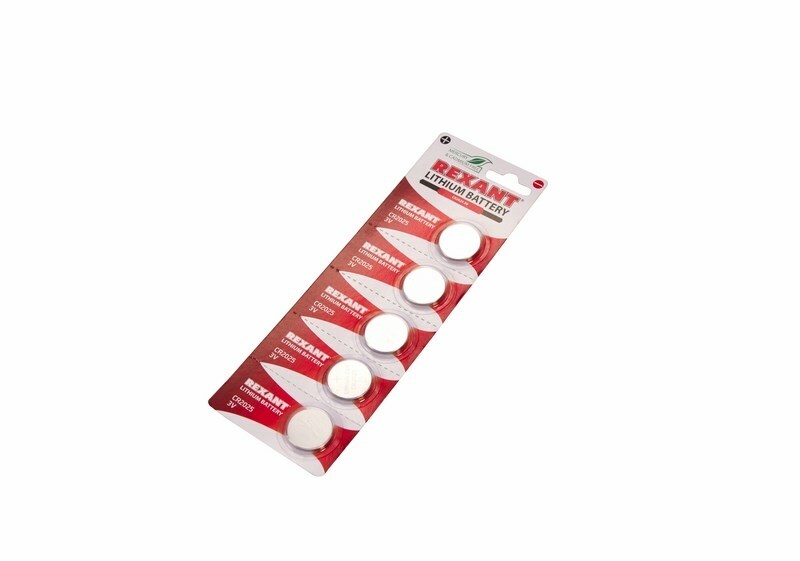Drainage of groundwater - this lowering of the groundwater through various systems: pipe, Trenches, channels, wells, pumps and other devices. Today, for this to suburban areas used pipe system as the most effective in terms of long-term operation, and ease of installation. drainage pipes for removal of groundwater - a few species that are now offering manufacturers. They differ from each other only in the material from which made.

Read article
- 1 Materials for the manufacture of pipes
- 1.1 ceramic
- 1.2 Asbestos-cement (hrizotiltsementnye)
- 1.3 plastic
- 1.4 PVC pipe
- 1.5 polypropylene
- 1.6 polyethylene
- 2 Perforation culverts
- 3 filter-bed
- 4 Selection of pipes for soil type
- 5 Corrugated drainage pipe
- 6 Rules for the organization of the drainage system to drain groundwater
- 6.1 The angle of inclination of the drainage
- 6.2 stacking sequence
- 7 Manufacturers of drainage pipes - especially at what price to buy
- 7.1 Drainage pipe Perfocor
- 7.2 pipes KORSIS
- 7.3 Pragma pipes
- 7.4 pipes soft rock
- 7.5 prices
Materials for the manufacture of pipes
The basic material for production of drainage pipes serves today plastic. More recently, when the polymers were not as claimed in the industrial scale, for drainage pipes made of clay and asbestos. In the first case these were ceramic products, the second based on asbestos-cement mixture.
ceramic
Release them in accordance with GOST 8411-74, which provides for the production of three types of tubular products, which differ from each other external shape: round, hexagonal and octagonal. The inner section - round.
The range of size indicators.
| dimensions | ceramic drainage |
| Diameter, mm | 50÷300 |
| Length m | 333 (option 500) |
| The wall thickness, mm | 11÷27 |

Manufacturers offer a pipe made of ceramics such as perforated or non-perforated. The compound made using special coupling with a smooth inner surface.
Attention! Ceramic drainage tubes differ from those of the sewer absence glazed coating on the surface.
Use ceramic tube only in reclamation system. In the private house building they do not apply due to the difficulties associated with the installation.
Asbestos-cement (hrizotiltsementnye)
They are made in accordance with GOST 1839-80. The basis of the production of these pipes is asbestos fibers, which is filled with cement mortar. The fibers serve as a reinforcing frame, cement It gives the product shape and form stability.
Today, manufacturers offer two varieties of asbestos-cement pipes: pressure and gravity. Second and used in drainage systems dewatering.
Dimensional characteristics:
| dimensions | asbestos cement non-pressure |
| Diameter, mm | 100÷500 |
| Length m | 3.95 or 5 |
| Weight, kg | 26,5÷390 |

Compounds interconnected drain pipes - coupling or other fittingIn which are installed to impart rubber cuff seam tightness. service life - 50 years, a figure that is inferior plastic products. Although it should be noted that the asbestos-cement pipes are cheaper.
plastic
Entitled plastic perforated pipes for drainage is necessary to understand all the products made of all kinds of polymer compounds. And this is PVC, polypropylene polyethylene and high and low pressure.
All of them are divided not only on the source material, but also on some of the technical and technological aspects. For strength and stiffness:
- Flexible come in coils up to 50 m;
- rigid, with a length of 6 or 12 m.
According to the number of layers: single- or double-layer. By configuration: filter with or without a coating. In form: smooth or corrugated.
PVC pipe
It should immediately be noted that PVC pipes do not belong to the category of plastic products. Therefore, they produce certain length - 6 m. Connect they each flared way, it concerns a pipe joint between themselves and with fittings.

Specifications.
| Characteristics | Indicators |
| Mechanical strength, MPa | 50 |
| Coefficient inner surface roughness | 0.006 (very smooth) |
| Thermal conductivityW / (m * K) | 0,19 |
| Diameter, mm | 110÷500 |
It is necessary to indicate that there are several classes of PVC pipe stiffness from SN2 to SN16. This indicator determines how deep you can lay the products, so that they stand the earth pressure and other loads. For instance:
- SN2 - can be laid to a depth of no more than 1 m.
- SN3 - 6 m.
- SN4 - 9 m.
As practice shows, in the private housing construction is usually used SN3 or 4th grade.
polypropylene
This flexible plastic products such as single- or double-layer. The first outer layer - the corrugation, an inner smooth tube. This design allows the drainage system both to withstand dynamic loads and static.

Today, manufacturers offer this type of two pipe diameters of 110 and 160 mm, a wall thickness of respectively 3.4 and 4.9 mm. This gravity-flow version, the tube was kept inside the maximum pressure of 0.5 atm., It is normal for drainage. Most importantly, polypropylene It is well tolerated different temperature changes. It does not crack or break both at low and at high temperatures. This is very important if the soil freezing level is lower than the level of groundwater proleganiya.
polyethylene
It should be noted that the polyethylene pipe for drainage of groundwater - the best option in the system dewatering suburban areas. First, a flexible design. Secondly, its length - 50 meters, however tube come into coils. This makes it possible to lay the drainage system demon joints.
Manufacturers now offer pipes with diameters: 63-630 mm. The entire range is divided into three main groups:
- Without perforation and filtration layer.
- Perforated without filter.
- Punched and filter element.
In the particular housing construction is mainly used drains diameter of 110, 160 and 200 mm. Consider their characteristics.
| Characteristic | 110 mm | 160 mm | 200 mm |
| Orifice mm | 91 | 139 | 176 |
| The wall thickness SN4 class mm | 0,4 | 0,4 | 0,5 |
| The height of the corrugations, mm | 8,7 | 10 | 13 |
| Weight of 1 m, kg | 0,79 | 1,27 | 2,1 |

Attention! Double wall corrugated pipe made of two types of polyethylene: Outer corrugated layer - is low-density polyethylene (HDPE), an inner smooth - LDPE (high-pressure).
Perforation culverts
The extraction of groundwater by means of the drainage system - a drift of water through the pipes into which they penetrate through the holes. This is why in the drains and the perforation is done. It can be done by hand using a drill, and can be purchased ready-perforated products that much easier in terms of the future installation.
It should be understood that the perforation itself - this particular arrangement of holes of a certain area. According to the hole site drainage pipes are divided into four groups:
- Perforated 360 °. This versatile material which is commonly used in areas with a high groundwater level. Holes arranged circumferentially with a pitch of 60 °.
- Perforated 240 °. There is one requirement - to make pinless folding down.
- Perforated 180 °. Such pipes called "halves." They are typically used for stormwater.
- Perforated 120 °. This is a highly specialized species, so it is in the suburban areas do not use.

filter-bed
Typically, a drainage system in constructing a filter layer which is a layer of two different materials: geotextiles and rubble. Origin generates external protection, a second inner. They are so arranged and - first laid in a trench geotextile, it is filled with a layer thickness of rubble 15 cm, it is laid pipe, then another layer of crushed stone and all wrapped ends geotextiles. A multilayer structure.

Today, manufacturers offer ready-made drains wrapped filter material, which is used as all the same geotextile or coconut winding. To determine which one is the best, we must understand that the geotextile - a non-woven fabric of polyester, that is, an artificial material is a polymer-based. Therefore it long life. In this polymeric material can easily tolerate high loads, it will not rot, corrode.
In this regard, coconut winding concede on many positions. She has a small service life, use only in sandy soils. Thus the bandwidth of coconut fiber 700 microns in geotextiles 450 ÷ 700 microns. That is, in many respects better than the second material. Therefore, if there is a choice, it is better to give preference to the geotextile.

Selection of pipes for soil type
An important aspect of the choice of which will depend on the quality and efficiency of the drainage system.
- If on the building site soil crushed stone or gravel, it is possible to use a single-layer perforated tube without filtering layer.
- If the soil is sandy, then used the drainage system of products with a protective filter layer.
- If the soil is clay, it is possible to take advantage of the two options. Origin - put in a crushed stone layer monolayer Dren without filtration, followed by wrapping geotextile. The second - to use the system with filtration.
- If the site loam soil. There is one option - a pipe wrapped with geotextile, sprinkle with crushed stone.
Corrugated drainage pipe
Today, all manufacturers produce corrugated drainage pipe, as the best option with a large load capacity. Flute - a stiffener, which provide the required strength. They began first to produce pads under the tracks and roads, where pipes are exposed high mechanical stress from the cars passing by the place of the sewer installation system.
But over time, in view of the fact that the technology of production of corrugated pipes is no different from the smooth, basically we began to produce these models. Now they are used in any drainage and sewer systems regardless of whether they will withstand heavy loads or not. But large-diameter products still used for pipelines which may be exposed to fairly severe test.

It should be noted that the corrugated PVC drainage pipe of 400 mm diameter and up to perforation happens. Manufacturers offer products with a diameter not more than 200 mm. All other models - a sewer types. But if there is a necessity of laying in the drainage system, it is possible to make holes in them with a drill and a drill, so as to create conditions for the penetration of water into the tube junction. That is, make the usual sewer pipe drain with their hands - not a problem.
In this case, for their installation using the traditional standard setting scheme
- In the prepared trench laid geotextile.
- It is filled with crushed stone layer thickness of 15 cm.
- Laying pipe.
- Another top layer of gravel, so that it is fully closed pipe line.
- Geotextile performed wrap.
- Backfill with soil.

Rules for the organization of the drainage system to drain groundwater
Generally, drainage systems are divided into two groups for the removal of ground water and to drain precipitation. The latter is called livnevki. It is laid at a small depth, and its main task - to bring a portion of rainfall and water tayaschego snow. often storm drains do as an open system, which is a trench, covered with rubble.
With regard to the drainage of groundwater, this pipe system, laid below the ground water table. For this scheme determined by stacking, which may be annular or in the form of herringbone. Last - is one main highway, to which are attached at an angle of auxiliary branches.
Attention! dewatering system have to do around the house foundation. Therefore, it is laying the foundation to the beginning of the bookmark design.

If laying of drainage pipes is carried around the house, which is already built, it is necessary to adhere to the following technologies:
- Dug trench length not exceeding 20 m along foundation.
- It laid pipework.
- All protective measures are carried out.
- The backfilling of the trench.
- Dug next 20 m.
- And wires assembly work in this area.
This technology makes it possible not to dig a trench around the perimeter foundationNot to reduce its load-bearing capacity.
Related article:
Drainage at their summer cottage. To avoid errors, it is necessary to carefully study the various techniques, thematic designs, modern materials. The knowledge gained will be useful to carry out work on their own and to ensure close monitoring of action employed professionals. All this in greater detail in this publication.
The angle of inclination of the drainage
The most important indicator of dewatering devices of the system - the slope of drainage pipes. Its value - 5 ÷ 10 mm per meter of pipe length. The angle of inclination is laid in step digging trenches. Their bottom and compacted sand or fine gravel with beads up to 20 mm. It was during this time and it is necessary to carry out alignment at the required angle.

stacking sequence
To begin the installation of the drainage system can be anywhere: or end in the assembly wellOr from home. Typically, the master selecting a second embodiment because, when it is easy to control the angle of inclination of the pipe sections.
If drains are used for flexible assembly, they are unwound at the desired size with the laying of the prepared trench. When the branching line or joining other branch fittings are used of the same material as the pipes themselves.
Once the assembly of the system is completed, all the trenches backfilled with soil. This is the case if the product with the filter layer have been used for the construction of the drainage system. If the pipe material was used without geotextile or coconut fibers then laid on top of the tube is filled with crushed stone wiring layer thickness of 15 ÷ 20 cm. It is recommended to design the whole enclosed in a layer of geotextile.

Manufacturers of drainage pipes - especially at what price to buy
Today the market is inundated with drainage plastic pipes from different manufacturers. Each of them offers a fairly wide range of products, which corresponds to the Russian standards. In addition, each company focuses on quality and assortment. Here are some well-known manufacturers, which are part of the leaders in the Russian market.
Drainage pipe Perfocor
A distinctive feature of the drainage pipes Perfocor - is the product of the IPA. They may be:
- monolayer or bilayer;
- with perforation and without it;
- flexible and rigid;
- wrapped in geotextile or without a filtration layer.
Perfocor-I - it drains belonging to the class of SN4 strength Perfocor-II of - a class SN6 or 8 Perfocor-aero - it SN16 class.
Attention! The latest model is used for the construction of a drainage system under the runways.

pipes KORSIS
This is a huge range of diameters: from 110 to 3000 mm. Hence the wide range of use for the different spheres of the national economic. In the particular housing construction is mainly used tube diameter of 110-200 mm. A distinctive feature of this species - starting raw material. The drains KORSIS used high density polyethylene (HDPE).
Dean tubes standard:. Or 6 or 12 m length products with over 2600 mm diameter was 2.2 m.

Pragma pipes
Drains from a Dutch producer are made of polypropylene. One of its plants located in Zhukov. This plant produces drains:
- diameter of 160 to 630 mm;
- the length of each - 6 m;
- Three classes of strength: SN8-10-16.
assembly line produced flared manner.

pipes soft rock
This is a unique drainage system consisting of a special filter lock, which is composed of polystyrene elements, enclosed in a geotextile fabric. That is, the polystyrene pellets replace the gravel. Many experts say that this is a promising direction in the provision of drainage systems. Its effectiveness is higher than traditional options on 50%. It is based on a polyethylene perforated pipe length 3 m.
Today manufacturer produces a pipe diameter of 110, 160 and 200 mm outer filter shell diameter of 300-400 mm. Stack can be to a depth of not less than 2.5 m, and they can withstand the weight of a passing car to 2.5 tons.

prices
Buy all of the above drainage pipes can be in any construction market without problems. Here are their prices from manufacturers.
| Manufacturer | The price of drainage pipes (D110), rub. / Rm. m |
| Perfocor | 236 |
| KORSIS | 203 |
| Pragma | 480 - 160 mm |
| soft rock | 330 |




